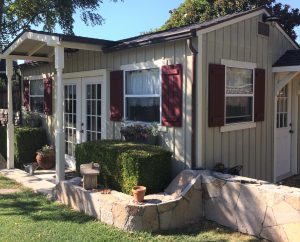Accessory Dwelling Units (ADUs)
 Accessory Dwelling Units (ADUs), also commonly known as in-law units, granny flats, or secondary units, can play an important role in adding cost-effective affordable rental housing, as well as providing a source of income for homeowners. Consistent with recent State laws, the City of Sonoma has updated its regulations to facilitate construction of new ADUs, including modifications to requirements for parking, fire sprinkler systems, and water and sewer connection fees. Short term rental (less than 30 days) of ADUs is prohibited.
Accessory Dwelling Units (ADUs), also commonly known as in-law units, granny flats, or secondary units, can play an important role in adding cost-effective affordable rental housing, as well as providing a source of income for homeowners. Consistent with recent State laws, the City of Sonoma has updated its regulations to facilitate construction of new ADUs, including modifications to requirements for parking, fire sprinkler systems, and water and sewer connection fees. Short term rental (less than 30 days) of ADUs is prohibited.
On December 16, 2020, the City Council approved Urgency Ordinance 7-2019, which modified Municipal Code Title 10 "Integrated Development Regulations and Guidelines" to revise regulations related to Accessory Dwelling Units and Junior Accessory Dwelling Units including: Chapter 19.10 "Zones and Allowable Uses" and Section 19.50.090 "Accessory Dwelling Units".
Details can be found in Sonoma Municipal Code section 19.50.090, Accessory Dwelling Units.
Customized ADU Feasibility Consults, just for Napa and Sonoma County homeowners!
Information on Customized ADU Feasibility Consults, just for Sonoma homeowners is available for download.
For more information about building an ADU, contact the Planning Department.
New! Pre-Reviewed ADU Plans Program
This program allows designers to submit ADU plans for pre-approval for compliance with the CA Building Code, and property owners to utilize these plans to reduce plan check timelines and construction costs. The program helps the City meet the goal of creating diverse housing options throughout Sonoma by encouraging ADU construction. Learn more and find pre-reviewed ADU plans.
